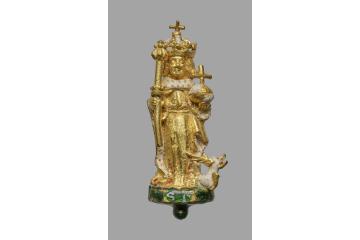Explore the Histories of Northamptonshire Interactive Timeline
Medieval to Tudor
1066 to 1603 CE
As England's rulers change, stone castles and churches are built, markets and settlements flourish, and Northamptonshire plays a key role in national power struggles.
Eleanor Cross
This 13th century fragment of carved stone comes from the medieval cross located near Delapré Abbey, one of just three surviving Eleanor Crosses.
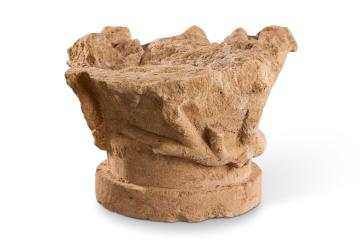 ©
NMAG
©
NMAG
Monastery Key
15th century key from St. Andrew's Priory, a Cluniac monastery located in medieval Northampton.
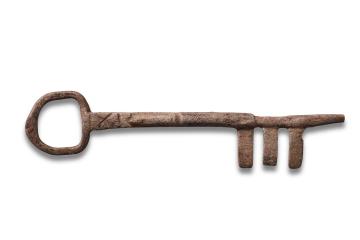 ©
NMAG
©
NMAG
Treaty of Edinburgh - Northampton
In 1328, England's parliament met at Northampton Castle; where they agreed this peace treaty officially marking the end of the First War of Scottish Independence.
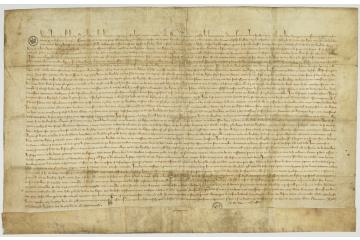 ©
National Records of Scotland
©
National Records of Scotland
John Woodville Tomb
Medieval tomb chest for John Woodville in St. Mary the Virgin church in Grafton Regis. John Woodville was the great-grandfather of Elizabeth Woodville, Queen of England during the 15th century.
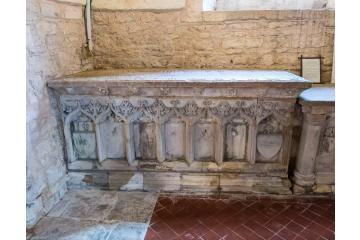 ©
Grafton Regis Historians
©
Grafton Regis Historians
Costrel
Medieval leather flask (costrel) used for water or other drinks. Found in the Market Square, this example is embossed with a sword motif.
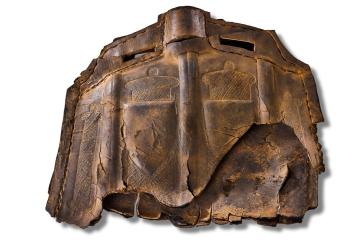 ©
NMAG
©
NMAG
Chichele College, Higham Ferrers
Chichele College in Higham Ferrers built by Henry Chichele, largely demolished by Henry VIII. The College was founded by Henry Chichele in 1422 was for 8 chaplains, one of whom was to be the Master or Warden, 4 Clerks and 6 choristers. One of the Chaplains or Clerks was to be assigned to teach grammar and another singing instruction.
 ©
English Heritage
©
English Heritage
Woodville Tiles
Medieval floor tiles decorated with the crests of the the Woodvilles and House of York. Laid as part of the floor at the Hermitage in Grafton Regis.
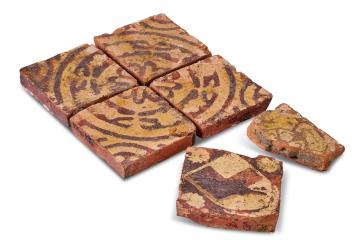 ©
NMAG
©
NMAG

